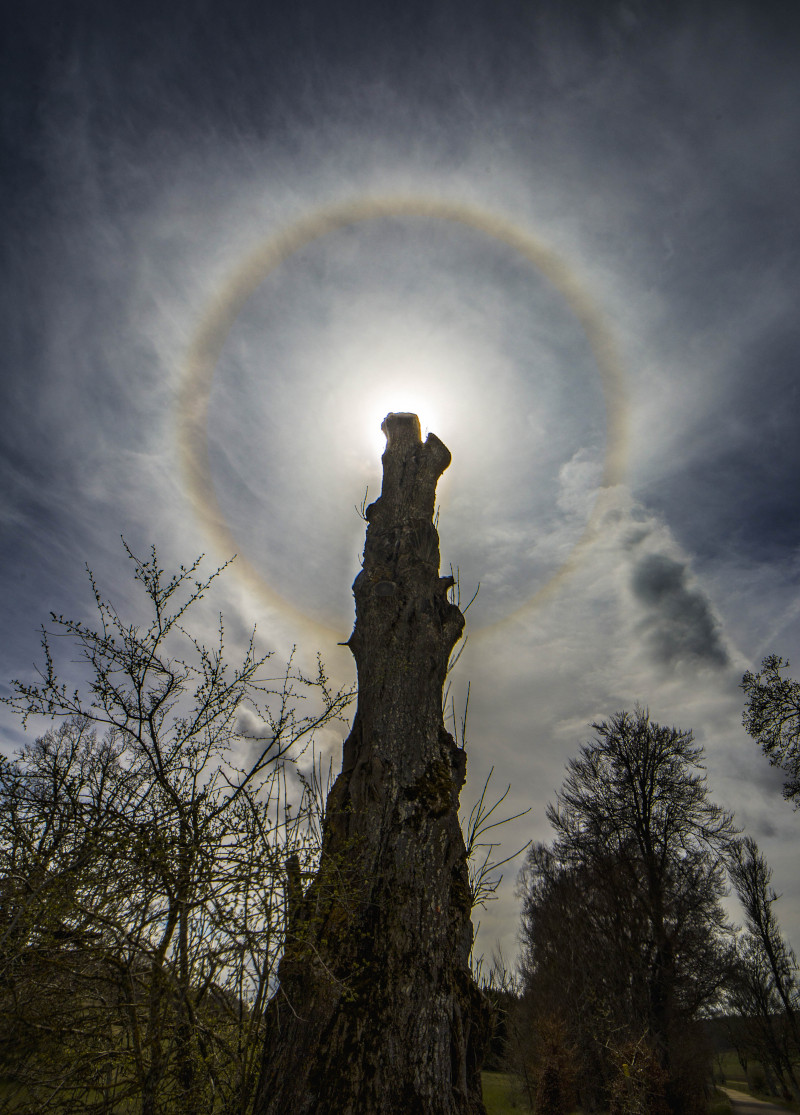2024年1月13日
Circling the Sun
Image Credit & Copyright: Radoslav Zboran
Explanation: Earth’s orbit around the Sun is not a circle, it’s an ellipse. The point along its elliptical orbit where our fair planet is closest to the Sun is called perihelion. This year, perihelion was on January 2 at 01:00 UTC, with the Earth about 3 million miles closer to the Sun than it was at aphelion (last July 6), the farthest point in its elliptical orbit. Of course, distance from the Sun doesn’t determine the seasons, and it doesn’t the determine size of Sun halos. Easier to see with the Sun hidden behind a tall tree trunk, this beautiful ice halo forms a 22 degree-wide circle around the Sun, recorded while strolling through the countryside near Heroldstatt, Germany. The Sun halo’s 22 degree angular diameter is determined by the six-sided geometry of water ice crystals drifting high in planet Earth’s atmosphere.
Tomorrow’s picture: there be dragons
日晕与太阳
影像提供与版权: Radoslav Zboran
说明: 地球绕行太阳的轨道并不是圆形,而是椭圆。地球在椭圆轨道上最靠近太阳的点称为近日点。今年的近日点出现在世界时1月2日01:00,当时地球与太阳的距离,比离太阳最远的远日点要近约500万公里。想当然耳,地球与太阳的距离并不能决定季节,也不会影响日晕的大小。不过,在这幅于德国黑罗尔德施塔特镇附近的郊区漫步所拍摄的影像里,当太阳隐身在高大树干的后方时,倒是更容易看到这种宽22度、环拱在太阳周围的美丽圆形冰晕。日晕的22度张角,则是由漂浮在地球大气高层的六角形冰晶所决定的。
明日的图片: there be dragons







